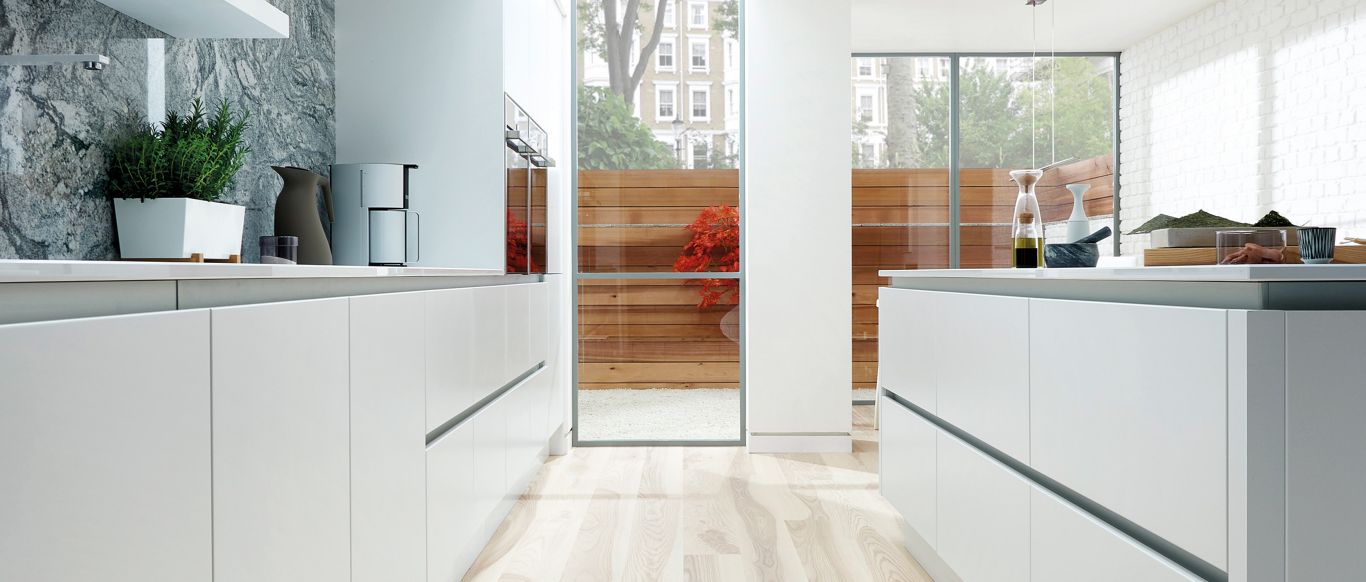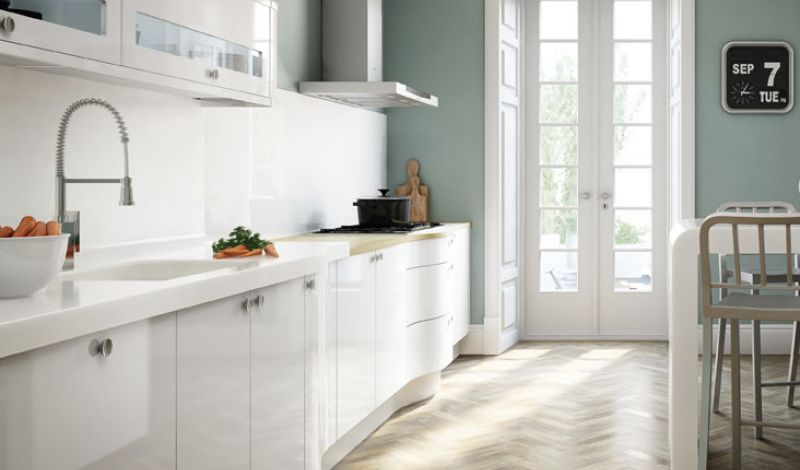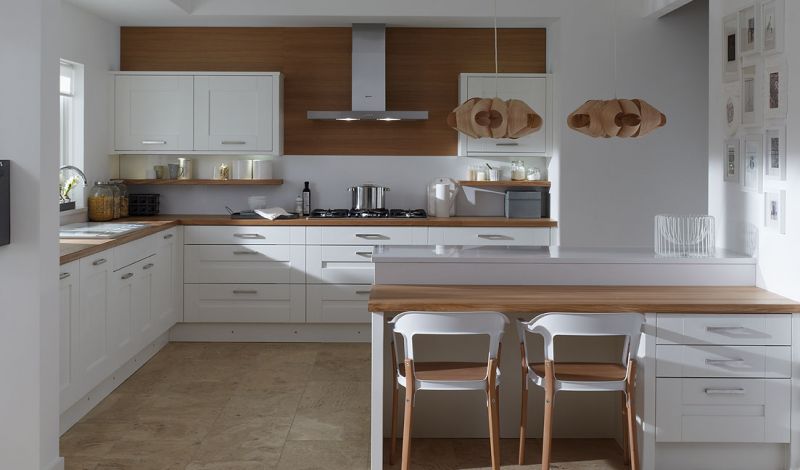Small Kitchens
Small kitchens can present a real challenge for the kitchen designer as the ‘wish-list’ for most people considering a new kitchen is often inspired by the images they see in glossy magazines and manufacturers brochures – all of which of course are dominated usually by very large and impressive designs.
There are however some Golden Rules that the kitchen designer can employ when embarking on a design for a small kitchen. Some useful pointers would be:
- Consider the elimination of anything that could possibly be deemed as not entirely essential in the kitchen. Eg washing machine, drier, freezer, ironing board, bulk purchase storage. There are storage possibilities in utility rooms, understairs cupboards, garages and even lofts and garden sheds and these all need to be carefully brought into the arena if a totally rationalised kitchen design is to be achieved.
- The perception of space must be preserved if any ‘wow factor’ is to be created. This means not fitting cupboards to the ceiling unless absolutely necessary as any reduction in the perceived area of the ceiling will adversely affect the feel of the room.
Consider instead standard wall units but fitted at a lower height – say just a 350/400mm space from the worktop as this way the top of the wall unit van be used as display shelf and the unit itself is more useable as it’s contents are at eye level. If it seems illogical to ‘waste space’ then, before disregarding this advice, just consider what would be kept at high level and how often it would be a nuisance if it was to be stored elsewhere.
- Fit worktops at the standard continental height of 860mm – this has a profound effect on the sensation of space and most people find it more comfortable height to work at.
- Consider the use of mid-height housings and larder units, as the storage lost by not going any higher is compensated by the top being at a useable level for say a TV, sound system, wine rack or anything else that softens the feel of the room.
- Examine the option of an L shape plus a straight run rather that a U shape – the elimination of an awkward to access corner unit can often be compensated by the extra floor space generated.
- Think about narrower runs of units where appliances are not involved – 450mm or 500mm deep units often hold just as much as standard units as frequently depth is wasted in deeper units due to difficulty in retrieving items from the back.
Other useful tips for small kitchens are:
- Always put tall units in a corner – never on the exposed end of a run; create more worktop by omitting the draining board in favour of a portable drainer; add drawers to the plinth void; keep worktops and floors light in colour; illuminate plinths to maximise the visible floor space and use door shelves or baskets that put 1/3 of the contents on the door with 2/3 on a reduced depth shelf.
What needs to be remembered is the fact that your enjoyment of your new kitchen will not be governed by how much you have managed to ‘cram’ into it.
The clever designer knows where not to put something and in a small kitchen it is this sort of know how that will make your kitchen both a delight to work in and have the ‘wow factor’ that will impress your friends (even if you do have to fetch the Christmas cake tin from the shed once a year!)
Good design is not automatic – it has to be worked at - and you should always ask for a rationalisation of it if you are having a design prepared by a kitchen specialist.
Use the search function on the website to find your nearest Kbsa retailer



